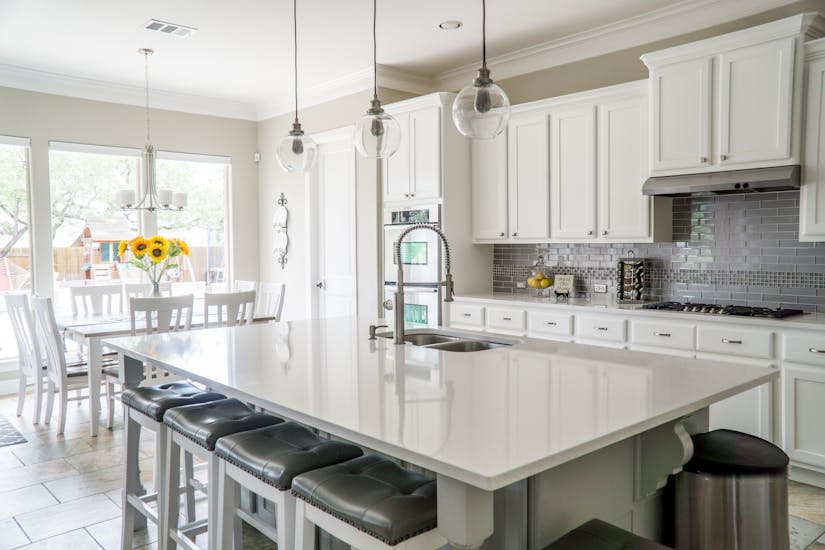The living room is often considered the heart of the home, serving as a central hub for relaxation, entertainment, and social interaction. Traditional living room layouts, however, may not always suffice to meet the evolving needs and styles of contemporary households. This article delves into innovative layouts that challenge conventional design paradigms by emphasizing flexibility, functionality, and aesthetic cohesion to transform your living area into a dynamic and welcoming space.
Open-Plan Living
Open-plan layouts have become increasingly popular for their ability to create a spacious and inclusive environment. By eliminating walls that separate the living room from the kitchen and dining area, open plans not only enhance natural light but also foster a social atmosphere, making them ideal for hosting gatherings. To define different areas within an open space, strategically position rugs to visually delineate areas and arrange furniture to create distinct zones for dining, lounging, and cooking. Employing a consistent color scheme across the open space can create a cohesive look while allowing for accent colors to define distinct areas subtly.
Zoned Layouts
In larger living rooms, establishing zones can make the space more functional and less overwhelming. Each zone can cater to a specific activity, such as reading, gaming, or watching television. Furniture can serve as natural dividers between zones, such as using large bookcases or console tables. Customize lighting for each zone to enhance its intended use—incorporate task lighting for reading areas and softer, ambient lighting for relaxation zones.
Multifunctional Furniture
As urban living spaces become smaller, the importance of multifunctional furniture grows. Such pieces can change their function based on immediate needs, thus maximizing spatial efficiency. Consider convertible sofas that transform into beds for guest accommodations or extendable tables that adapt to the number of guests or activities. Ottomans with built-in storage can help minimize clutter by serving both as seating and storage units.
Gallery Style
For those who cherish art, transforming a living room into a gallery-style space can provide a visually engaging environment. This layout focuses on the aesthetic display of art pieces, photographs, and unique collectibles. Employ focused lighting, such as spotlights or track lighting, to highlight artworks and create a museum-like ambiance. Choose sleek, understated furniture that complements the art without competing for attention.
Layered Layouts
Layering involves the strategic placement of furniture and decor to create depth and interest in the space. This technique is especially effective in rectangular living rooms, where it prevents the space from appearing flat. Incorporate items of varying heights, such as tall lamps alongside mid-height sofas and low coffee tables, to draw the eye through the space. Introduce a variety of textures and patterns to add layers of visual interest and warmth, enhancing the overall appeal and comfort of the room.
Eco-Friendly Layout
Incorporating sustainable practices into your living room layout not only benefits the environment but can also promote a healthier living space. Opt for furniture made from sustainable materials such as bamboo, reclaimed wood, or recycled metal. Integrate plants into the decor to improve air quality and add a touch of nature, contributing to both aesthetic value and environmental responsibility.
Technology Integrated Layouts
As technology becomes more integrated into our daily lives, accommodating it thoughtfully within your living space becomes essential. Create areas where technology enhances the living experience without dominating it. Incorporate built-in charging stations into side tables or within couches. Design custom cabinetry that discreetly houses screens and cables, maintaining the aesthetic integrity of your space without allowing technology to disrupt the harmony and design.
Flexible Spaces
One innovative approach is to design your living room as a flexible, multifunctional space that can easily transition from one use to another. Modular furniture, such as sectional sofas that can be rearranged or fold-away desks, allows the room to adapt to different activities and needs. This flexibility is particularly beneficial in homes with limited space, where the living room may also need to serve as a home office, gym, or guest room.
Personalized Nooks
Creating personalized nooks within your living room can add a sense of intimacy and individuality. These can be reading corners with a comfortable chair and a bookshelf, a small art studio space with easels and supplies, or a music area with instruments and seating. Personalized nooks cater to the hobbies and interests of household members, making the living room not only a shared space but also a collection of individual sanctuaries. Why not consider adding a beautiful fireplace as a focal point in your nook, providing somewhere cozy to curl up? You can find them at stonewoods.co.uk.
Conclusion
Rethinking your living room layout provides an excellent opportunity to customize your space according to your lifestyle and personal tastes. Whether you aim to create a multifunctional environment, emphasize aesthetic beauty, or seamlessly integrate technology, these innovative layouts offer the flexibility to make your living room both functional and stylish. By exploring these creative options, you can transform your living area into a uniquely personalized and appealing retreat. With careful planning and thoughtful design, even the most challenging spaces can become a harmonious and inviting part of your home.




